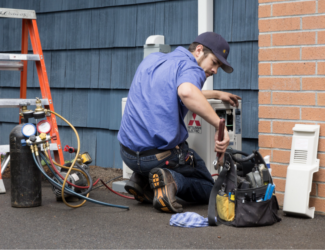
Electrical fire prevention tips
Common electrical fire causes
Understanding the common causes, warning signs and appropriate safety measures can help prevent an electrical fire in your home. The most common causes of electrical fires are:
- Incorrectly installed wiring
- Overloaded circuits & extension cords
- Defective plugs, switches & outlets
- Lighting that is misused or poorly maintained
Warning signs of faulty wiring or electrical systems
To prevent an electrical fire, learn to recognize the warning signs that indicate a possible wiring or electrical problem. Contact a licensed electrician immediately to examine and repair electrical problems if you experience any of the following issues in your home:
- Flickering or dimming lights
- Switches hot to the touch and/or emitting acrid odor
- Discolored cords, outlets or switch plates
- Repeatedly blown fuses or tripped circuit breakers
Every homeowner should be acquainted with at least one licensed electrician who can help keep their home wiring system safe.
Cords, outlets and plug safety
Electric currents carried by wiring, switches, plugs and appliances generate heat. Excessive or uncontrolled heat can start fires. To help prevent electrical fires, know how to use and store plugs and electrical cords and take these precautions:
- Don’t run cords under carpeting, bedding, or other combustible materials; also avoid placing cords across doorways or frequently traveled areas.
- Discard frayed or broken cords and never splice two cords together.
- Don’t overload outlets or use extension cords in place of outlets. Call an electrician to install additional outlets as necessary.
- Ensure plugs fit snugly in outlets to prevent shock and excess heat.
Additional tips from the National Fire Prevention Association
- Only use one heat-producing appliance (such as a coffee-maker, toaster, space heater, etc.) plugged into a receptacle outlet at a time.
- Major appliances (refrigerators, dryers, washers, stoves, air conditioners, microwave ovens, etc.) should be plugged directly into a wall receptacle outlet. Extension cords and plug strips should not be used.
- Arc-fault circuit interrupters (AFCIs) shut off electricity when a dangerous condition occurs. Consider having them installed in your home.
- Use ground-fault circuit interrupters (GFCIs) to reduce the risk off shock. GFCIs shut off an electrical circuit when it becomes a shock hazard. They should be installed inside the home in bathrooms, kitchens, garages and basements. All outdoor receptacles should be GFCI protected.
- Extension cords are intended for temporary use. Have a qualified electrician add more receptacle outlets so you don’t have to use extension cords.
How do I use a fire extinguisher?
When operating a fire extinguisher, remember the word PASS:
- PULL the pin. Hold the extinguisher with the nozzle pointing away from you and release the locking mechanism.
- AIM low. Point the extinguisher at the base of the fire.
- SQUEEZE the lever slowly and evenly.
- SWEEP the nozzle from side-to-side.






